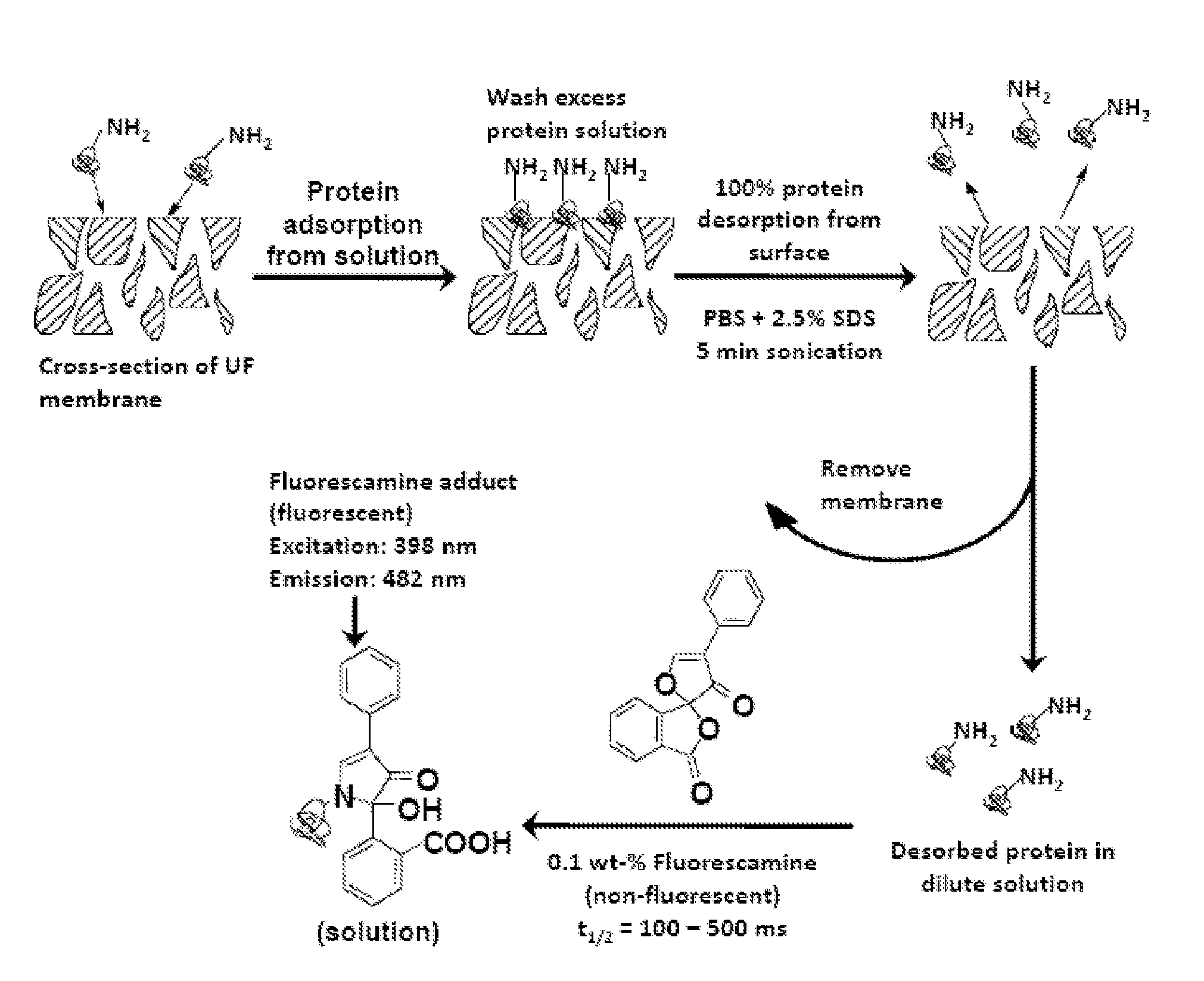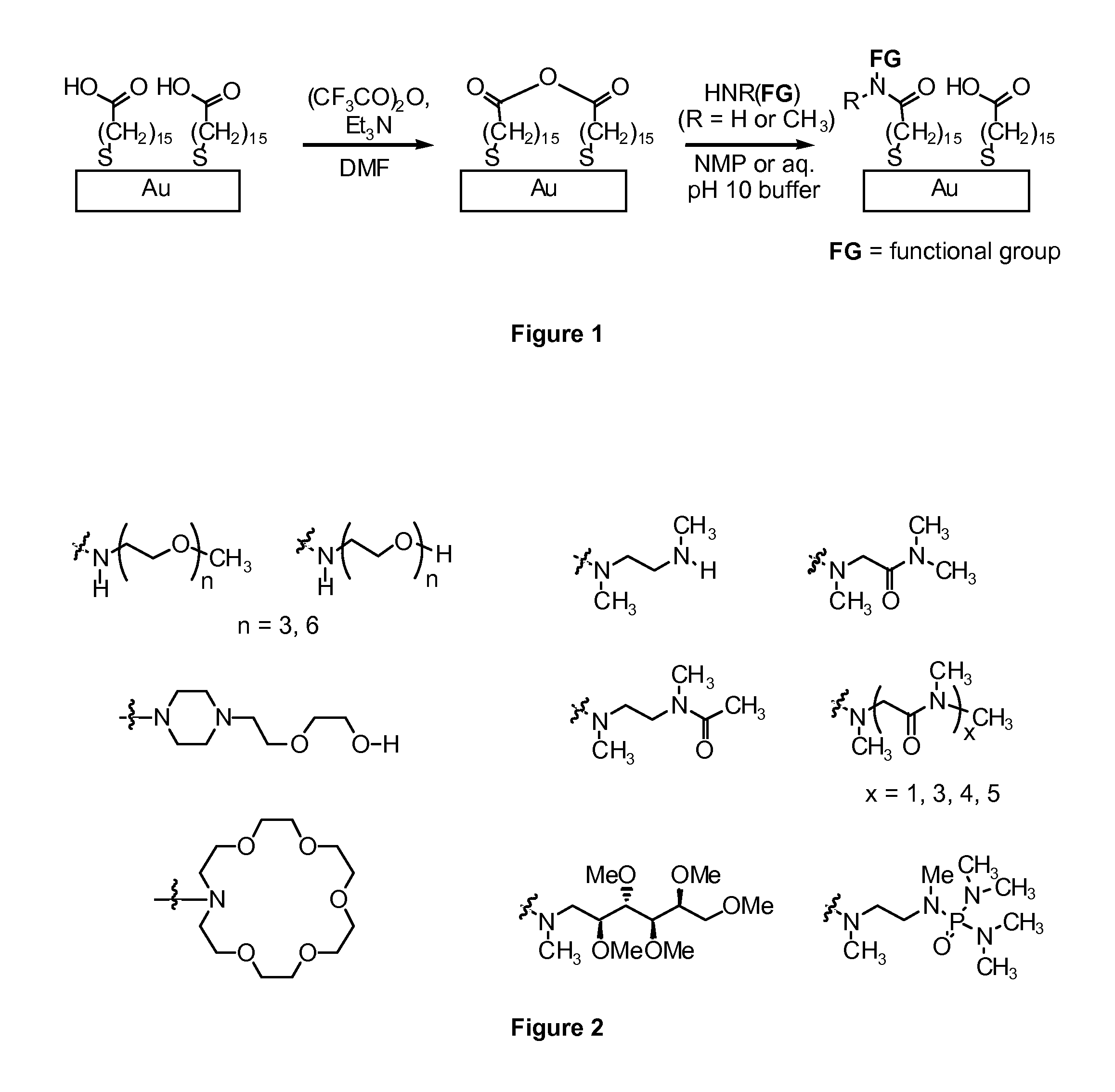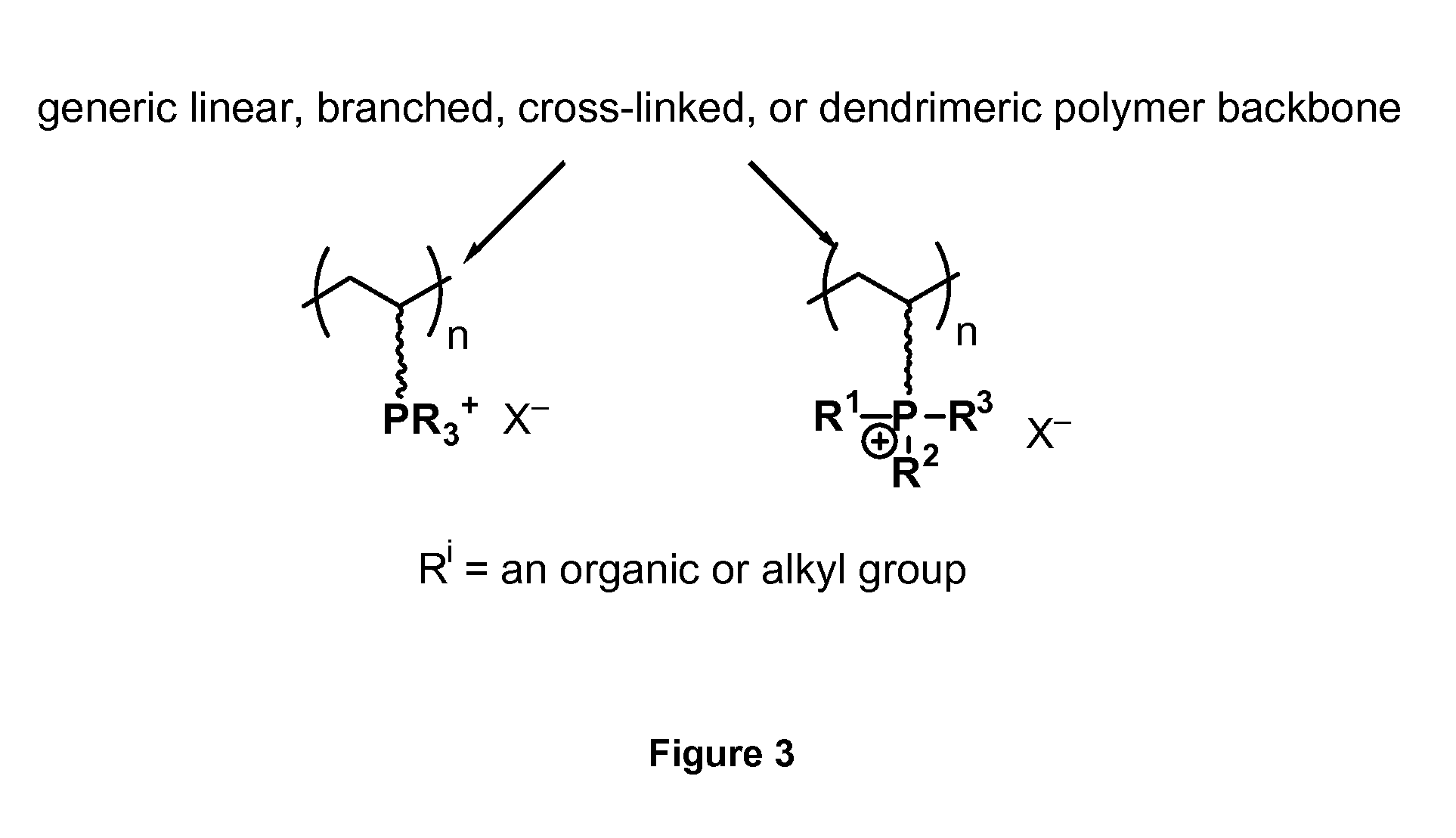Polymer coatings that resist adsorption of proteins
a technology of proteins and coatings, applied in the field of polymer coatings that resist adsorption of proteins, can solve the problems of rapid decrease of membrane water flux, unsatisfactory immune response, operating performance, and life, and achieve the effect of increasing the protein rejection of the membrane and improving the water permeation stability of the membran
- Summary
- Abstract
- Description
- Claims
- Application Information
AI Technical Summary
Benefits of technology
Problems solved by technology
Method used
Image
Examples
example 1
[0089]Herein, we show that several simple quaternary phosphonium- and ammonium-based polymers (FIG. 5a) are effective coatings for commercial water filtration membranes that resist protein adsorption under static exposure and dynamic flow conditions. Phosphonium- and ammonium-functionalized polymers have previously been used as biocides to remove bacteria and living organisms from surfaces (Popa, 2004; Kanazawa, 1993b); however, to our knowledge they have not been studied for resisting non-specific protein adsorption. Only one example of a tetra(alkyl)ammonium-functionalized SAM has been previously explored for protein resistance and exhibited only mediocre results (Otsuni, 2001). When presented as coatings on a commercial ultrafiltration (UF) polysulfone (PSf) membrane support, these cationic phosphonium and ammonium polymers resist non-specific protein adsorption as good as, or better than, cross-linked PEG-acrylate-based coatings.
[0090]It was also found that the some of the best ...
PUM
| Property | Measurement | Unit |
|---|---|---|
| thickness | aaaaa | aaaaa |
| thickness | aaaaa | aaaaa |
| pore size | aaaaa | aaaaa |
Abstract
Description
Claims
Application Information
 Login to View More
Login to View More - R&D
- Intellectual Property
- Life Sciences
- Materials
- Tech Scout
- Unparalleled Data Quality
- Higher Quality Content
- 60% Fewer Hallucinations
Browse by: Latest US Patents, China's latest patents, Technical Efficacy Thesaurus, Application Domain, Technology Topic, Popular Technical Reports.
© 2025 PatSnap. All rights reserved.Legal|Privacy policy|Modern Slavery Act Transparency Statement|Sitemap|About US| Contact US: help@patsnap.com



